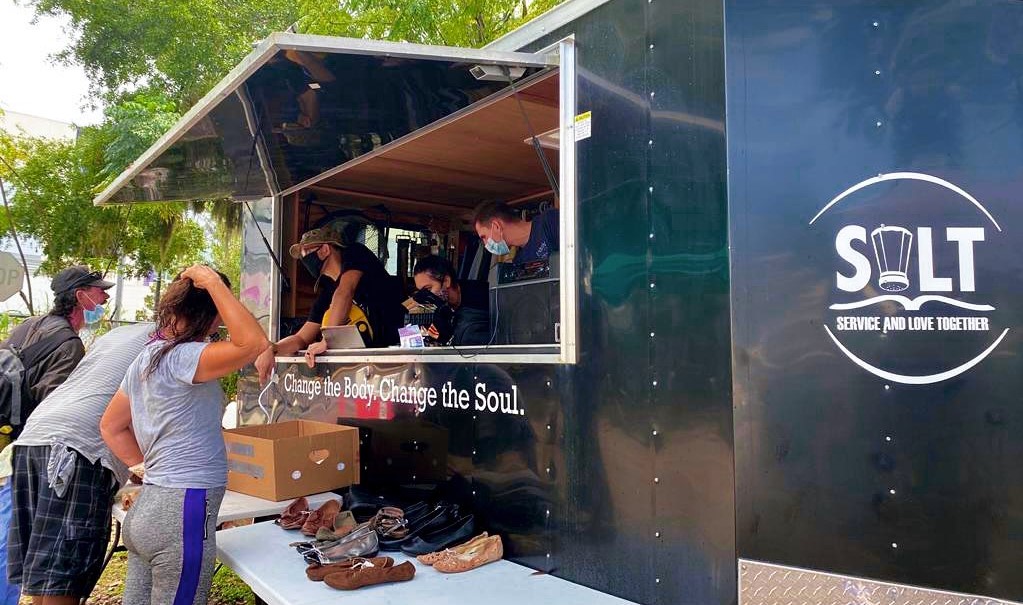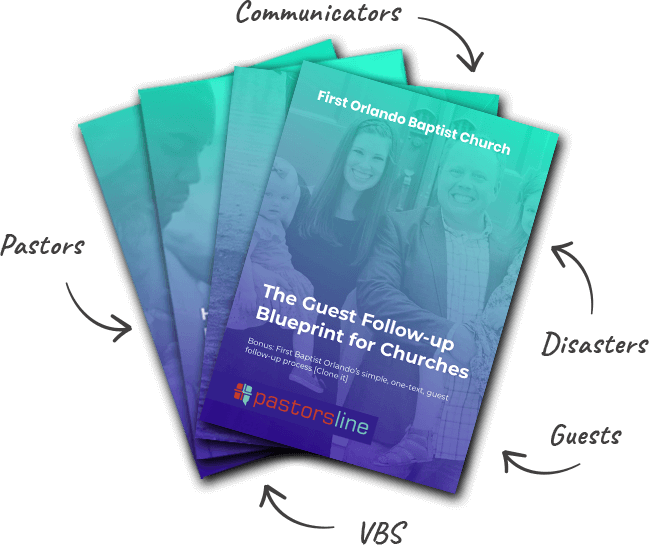
What if…
Your organization started as one thing…and then changed to something completely different. When you began, you were using PastorsLine for your bulk texting needs. As your needs changed, could PastorsLine change with you?
In this ministry case study, you will be able to get a glimpse into the wonderful work that Eric and his ministry have achieved over the years and how they are adapting digital tools to match their new processes. In other words, wow Eric from SALT went from reaching dozens to thousands while using PastorsLine and a text strategy.
In the beginning
Eric Camarillo’s organization began as mainly Bible study. It had 3 outreach projects and many different groups. The staff were all volunteers. To get in touch with their groups, the volunteers used a bulk texting app (PastorsLine) instead of their cell phones for several reasons:
- The groups became too large to comfortably handle via private cell phone.
- Using an app provided some supervision: Eric could see if the group leaders were messaging their groups; if not, he could remind them to do so.
- It was useful to have messaging all in one place: for example – Events: they could text all their people in one bulk message instead of having to have each group leader send a message.
Although Eric’s organization continued to grow, it all stopped around the time that COVID-19 arrived.
New focus for resources
The focus of Eric’s organization shifted to providing services for the unsheltered. He began fundraising. The city in which he was based reached out with funding to operate 3 days a week, providing showers, haircuts, and food.
That gave Eric’s organization leverage to apply for other grants. In addition, his work got on the news. Check it out for yourself here: SALT – Service And Love Together.
In 2020, SALT had 8 employees and had raised $360,000 (as compared to a prior $90,000).
In 2021, SALT had 25 employees and had raised $1,050,000.
SALT added more services. In addition to showers, haircuts, and food, the unsheltered they served could benefit from case management, storage facilities, charging stations, a mail center (an address at which to receive letters), and a laundry trailer. They also branched out to several different cities.
At the moment, SALT serves 150-200 people per day at any given location.
Their resources are earmarked for their services to the unsheltered. As a result, the Bible study outreach projects are on the shelf for the moment.
Changing needs
To help with the complex management of their organization, SALT added 8 admin staff. As the accounting team went through the books, they saw the repeating PastorsLine charge of $50. Naturally, they asked Eric about it, since no one was using PastorsLine any more.
Eric reached out to Jason at PastorsLine. Eric told Jason that it would be a shame to lose their many unused credits. Perhaps Jason had some ideas of how SALT could repurpose PastorsLine for their current needs?
Brainstorming
Here are some of the ideas which Jason and Eric discussed.
Critical updates
The unsheltered who want to use the SALT services come to the SALT registration desk on location. They sign up for the services which are on a first come, first served basis. Then, they wait until their name is called.
One idea would be to offer these people a “critical updates” service. Those interested would text a keyword to join the group. Another option is to plant HTML code on the SALT website, offering people to “Join the critical updates group by entering your number here.”
SALT staff would use PastorsLine tags to segment the opt-ins by service such as haircut and laundry. Then, staff would be able to text the people as needed.
Here’s an example: At the moment, the laundry trailer has 6 washers and dryers. It can handle 50 loads of clothes each day. So, after the first 50 sign up, the laundry service can no longer accept requests for that day. People with a “laundry” tag (those who have used the laundry service in the past) would get a text informing them of this. If that was the only service they were interested in, they would know not to waste their efforts coming in.
Other examples are barbers not showing up or weather conditions which force SALT to close services at a location.
News nudges
SALT has a newsletter subscriber list. As soon as the newsletter comes out, subscribers can get an SMS telling them to check their Inbox.
Since PastorsLine integrates with Mailchimp, SALT could also create a “text to join” data capture campaign to get new newsletter subscribers.
A third idea is general updates. Opt-ins could text to join a group which promises not more than 2 texts each month. For example: “Hi! We’re on the news. Check us out!” For non-newsletter subscribers: “Our newsletter just came out. Read it here [URL].”
Fundraising
SALT can increase awareness of an event or need by sending out an email AND a text message.
Industry standard email open rates run between 30-40%, with a 10% clickthrough. This means that any SALT fundraising email is most likely not being seen by 60-70% of their list. These are the people who will likely respond if sent an SMS.
Printed flyers
A “Text this code to sign up” message on any printed SALT flyer will get responses.
What’s happening at your church?
Is your ministry going through (or recently went through) some changes? Could you adapt any of these ideas for your own needs? Perhaps Jason and Eric’s brainstorming has inspired you to do some brainstorming of your own?
Remember: via the chat on our website, we are also here to help.
Try out the bulk texting app that can adapt to your church’s changing needs.
Let’s get started, take me to the free, $0 for 30 days trial.
We think it’s a good idea, but we’d like to know more about texting in churches first.



